Before you read a single word of this piece, put your headphones in and start playing the video below. If you suddenly find yourself with a great big grin on your face, it's safe to read on.
Launched on 15 February 1990, The Crystal Maze was a big-budget adventure game housed inside the biggest set on British television, presented by the man who wrote The Rocky Horror Picture Show, in which jumpsuit-clad contestants completed ingenious three-minute games in return for crystals that allowed them to jump up and down catching gold pieces of paper in a geodesic dome. Try pitching that today.
The show went on to become a huge ratings hit for Channel 4, with up to 6 million viewers. It is now a cult classic in the UK and internationally, shown regularly on specialist game show TV channels. But its success – and the show itself – happened almost entirely by accident.
Now, 25 years on, BuzzFeed News speaks to some of the key characters in the show’s creation and success.
Cast of characters
Richard O'Brien: Host of The Crystal Maze from its launch in February 1990 to 1993. Actor and playwright famous for writing and starring in The Rocky Horror Picture Show.
David G. Croft: Director and producer. Experienced TV figure whose directing and production credits include Top of the Pops, Shooting Stars, and the original Live Aid. Now head of television at the National Film & Television School.
James Dillon: Production designer. Has designed a long list of shows for TV and the stage including The Mighty Boosh and The Royle Family.
Sandra Caron: Played the fortune-teller character known as "Mumsy". Actor with a long career in stage and screen.
Ken Day: A then-25-year-old company director from Essex who appeared on the first ever episode of The Crystal Maze and was team captain.
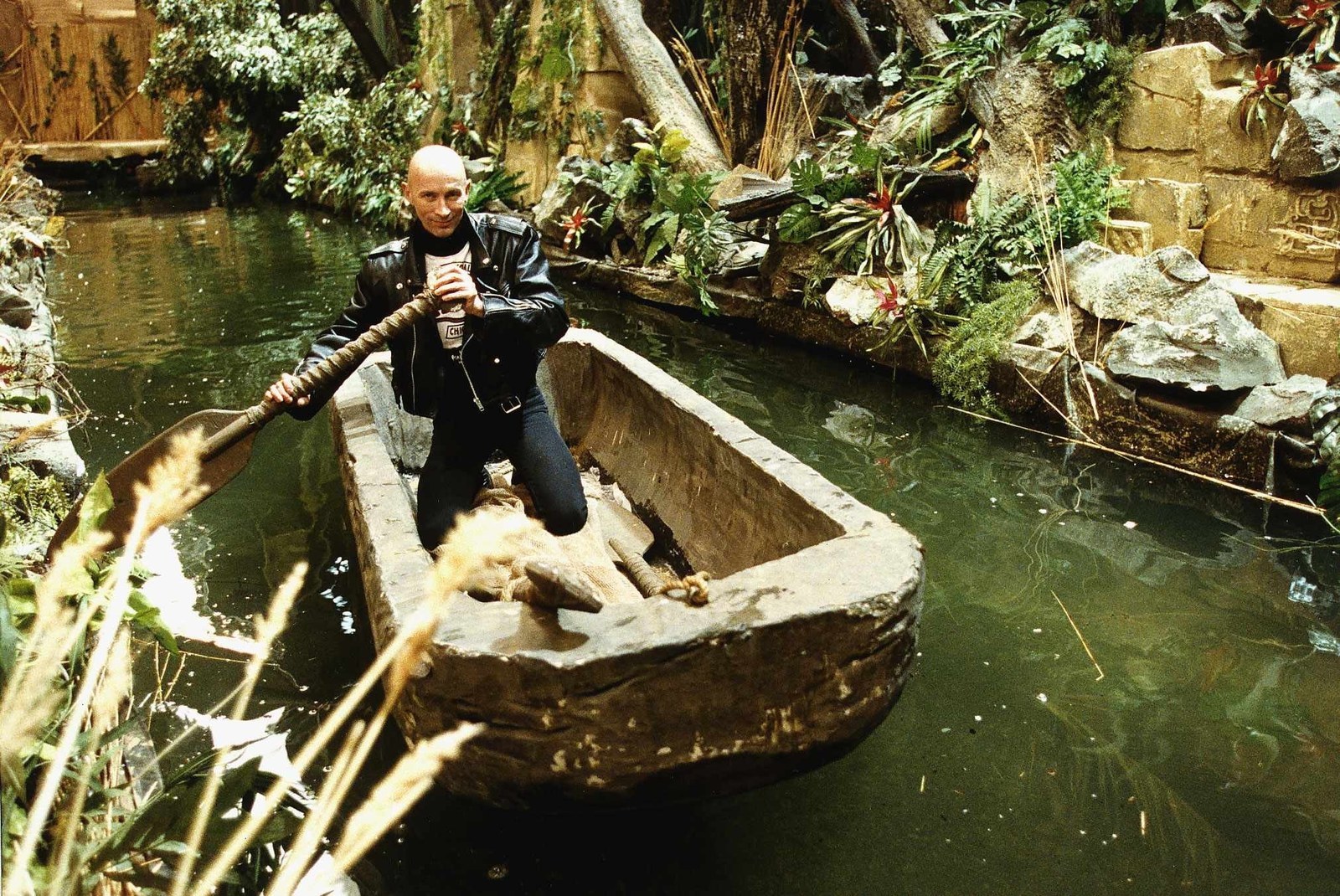
Richard O’Brien: I was asked to go to Chatsworth to talk about this programme. We were supposed to be doing a British version of The Keys to Fort Boyard [a hit French show in which contestants were similarly sent into closed rooms to complete set challenges]. Malcolm (Heyworth, managing director of Chatsworth Television, now retired) said to Channel 4, “Right, let’s rock and roll!” But the French people said, “Ah, but the fort is not ready.” He said, “What are you talking about? I’ve just spent a quarter of a million pounds of my own money on building the set and doing this.” But they kept saying it wouldn’t be ready.
David G. Croft: I can’t remember whose idea it was, but we decided we needed to create our own version of Fort Boyard. We went to the French and said, "We’re not going to make Fort Boyard; we’re going to make a different version."
The pilot, however, didn't go well.
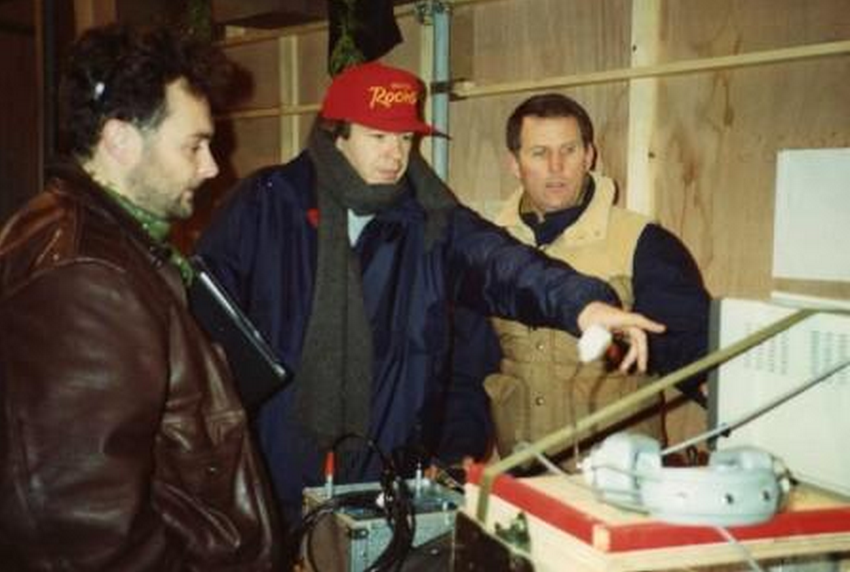
RO’B: I did a runner on the first day, I have to say. I was pissed off and ashamed of myself. I thought I’ve got this wrong, so I did a runner. Malcolm chased me back to my house and said, “I don’t want the person we had there today, we’ve dressed you up in a costume and all that, I want Richard O’Brien, I want you to be more yourself.” He said, “Find your own clothes for tomorrow and come along and be yourself.”
DGC: Richard is an immensely interesting man and had a fantastically interesting background. He didn’t look like anybody else and the important thing about the host was we didn’t want a presenter – we didn’t want someone that would make the public go, “Oh that’s him off so-and-so.” We hired him because he was an actor, and that’s also why we got Ed Tudor Pole [who hosted the final two series].
James Dillon: The original set looked more like a light entertainment set, a bit like a traditional game show. But that was a mistake, to think this was a game show rather than some sort of exciting world you could enter into and have an adventure in. Once we’d got away from the concept of it being a studio-based game to it being a travelling adventure, it became clearer what we’d have to do.
RO’B: We were very lucky because we got the better show. He [Malcolm] said he couldn’t afford to let this go, so he came up with a version of Fort Boyard, which was actually an improvement. It’s like when you go into the kitchen and say, “Ooh I’m gonna make a dinner tonight, and it’s gonna be great.” You’ve got all the time, you’ve got all the ingredients, but by the time you put it on the table it’s a stodgy mess.
And other times, you haven’t all the time, you’ve got people coming over in an hour and you go, “Oh my god!” and you run into the kitchen, you have the same ingredients, everything’s the same, but because you throw it together, you make it light, like a soufflé. It’s an improvement because you didn’t over-egg the pudding.
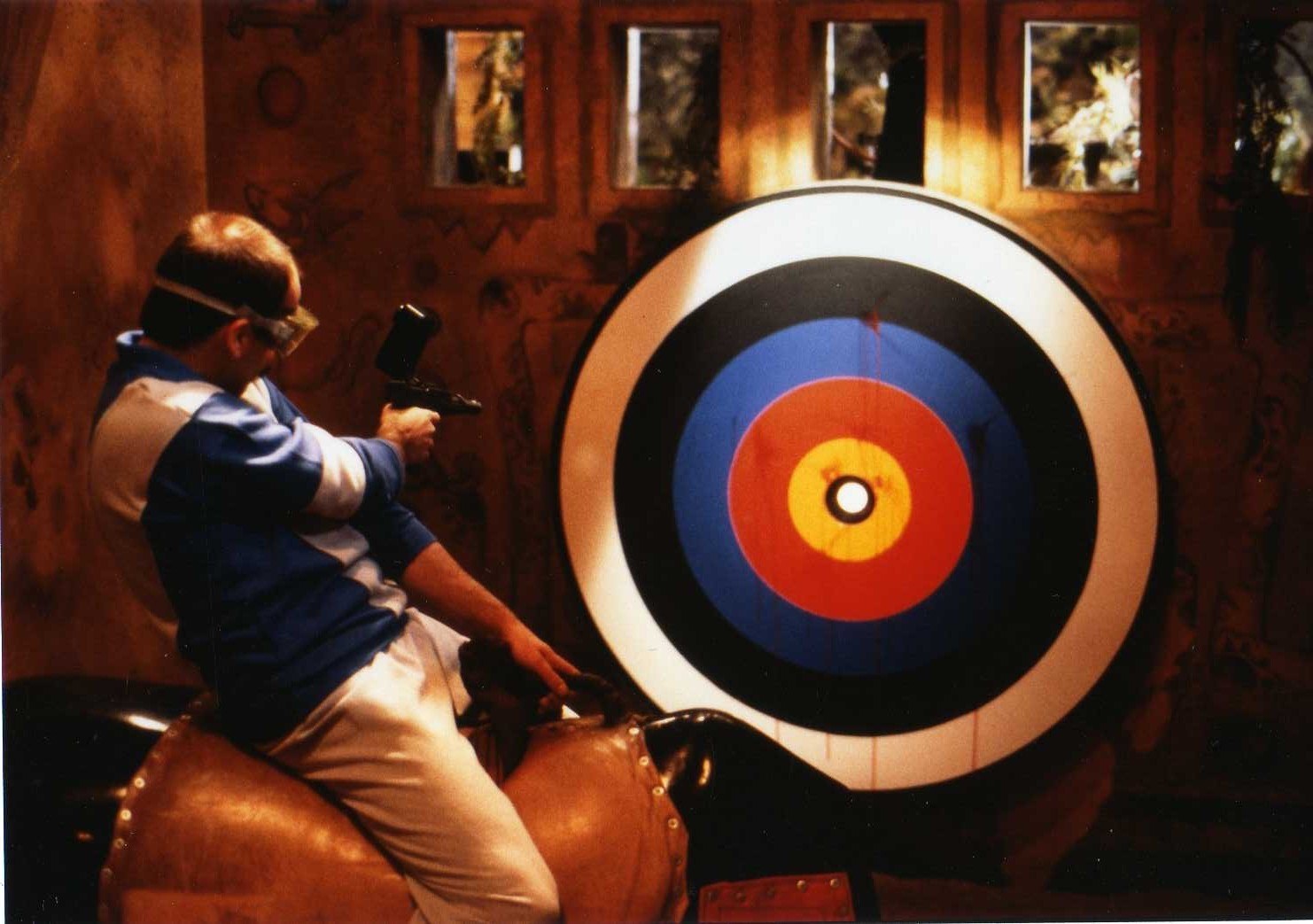
But even when the vision for the show was established, the logistics were still daunting.
DGC: It was a hard show to film; we were using new technology, we built the television studio inside Shepperton Studios, it was the biggest entertainment set that had ever been built, the budget was huge, there was a lot riding on it and a lot of pressure on myself and Malcolm. We weren’t sure it was going to work – there hadn’t been anything like it so we didn’t have any similar programmes to look at.
JD: At the time, I’m sure Crystal Maze was the biggest set ever built for a TV show, just because of the size of the studio and the sheer amount of scenery. It was a few years before people started doing entertainment-style game shows – Gladiators came a few years later with this arena-size venue. But they were different, we had a film set that you had to enter and do challenges in.
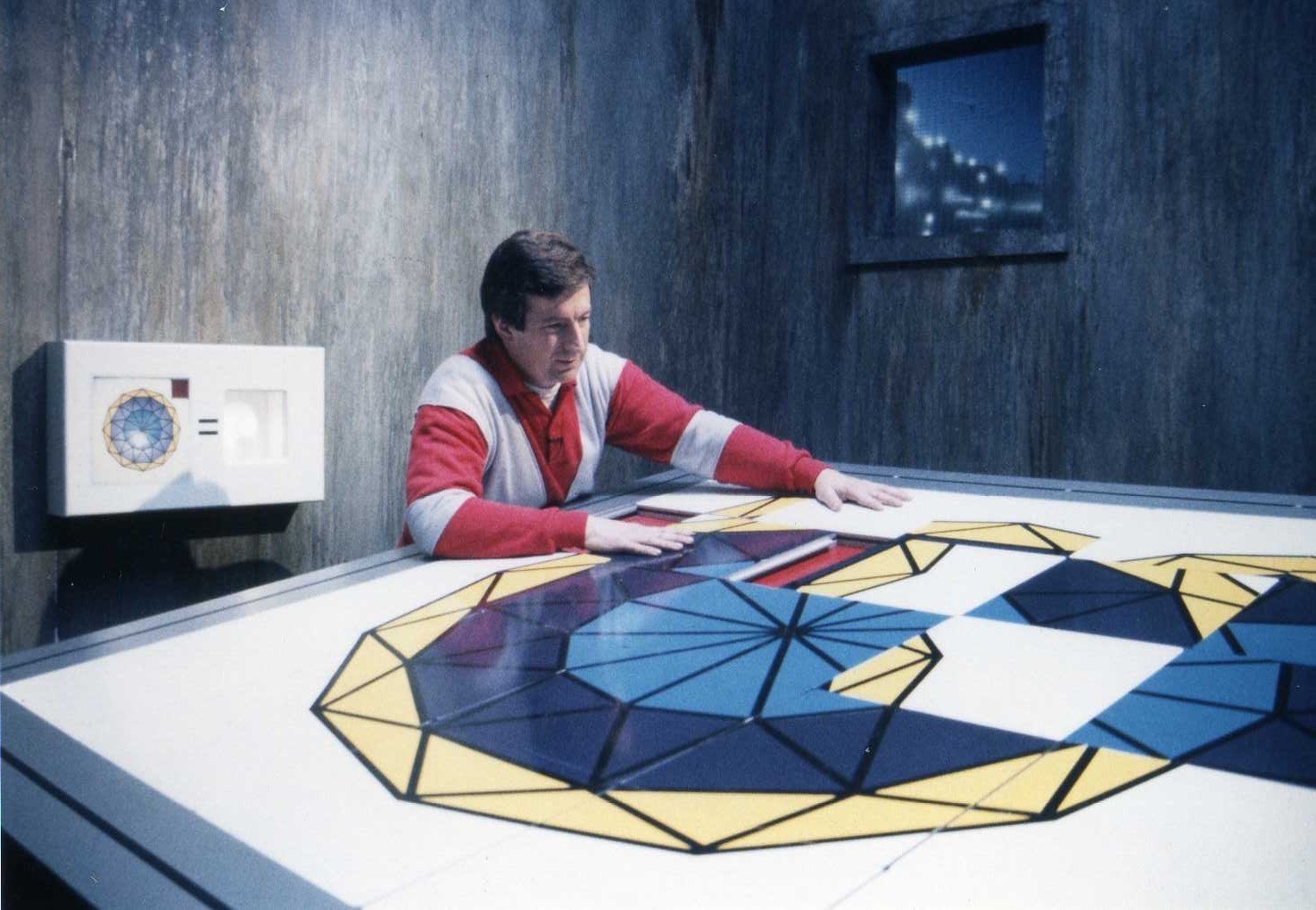
RO’B: In Fort Boyard there were lions prowling. They were never ever going to let contestants get in with a lion, it’s ridiculous. And they wanted girls mud-wrestling, because they were French. But we got away from all that.
DCG: We were going back and forth to Paris and one day they drove us to an industrial part of Paris and opened a warehouse door and there was a crystal dome. We said, “What are you doing with that?” They said, “We don’t don’t know, we just built it, but we don’t know what to do with it.” We said, “We’ll have that!”
JD: They were going to give us the dome but then they couldn’t, or wouldn’t – maybe it needed dismantling or transporting or something. So I ended up going to a company who did geodesic domes for exhibitions – that was the only part of the set that was designed by computers, although this was with a very early computer-aided design program.
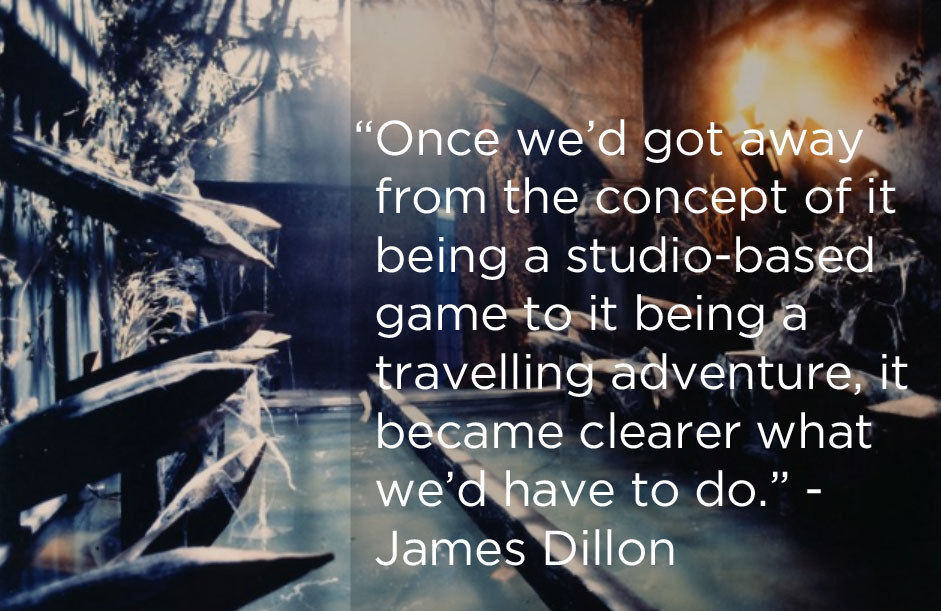
And then there were the games – and the players – to consider.
Ken Day: I was the captain on the first-ever episode and I’m still ribbed about it to this day. My wife at the time applied to be on another show … That got dropped but the same people said they were looking for people to do this and we just went along to the interview for a laugh. They got us to do some basic MENSA tests. I was 25 at the time and I’m 50 now; I just thought, Why not? I don’t think we signed any sort of health and safety form; I think it was just an accepted risk. This was pre-disclaimers.

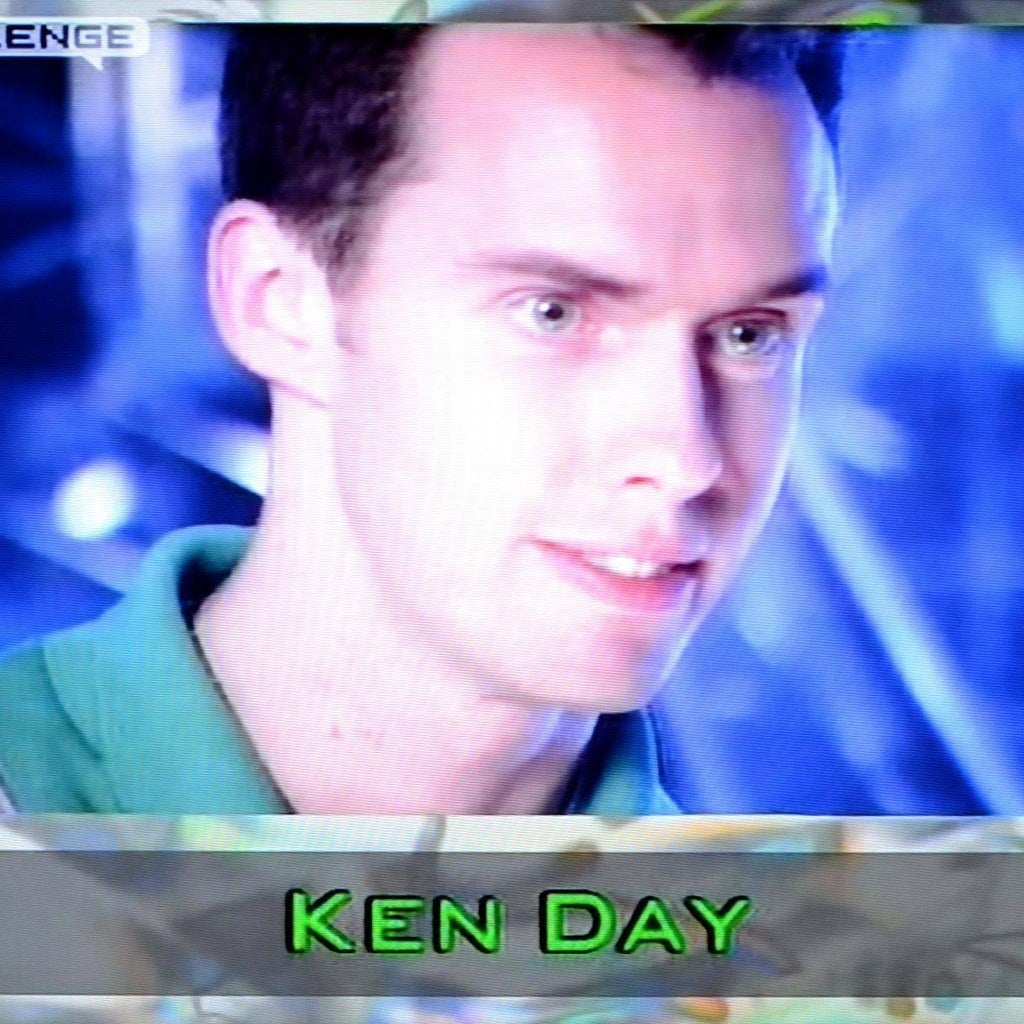
RO’B: When we got very macho people on, someone from the police or fire service or something or other, I’d always make sure I’d take them by the hand and they couldn’t do anything about it. It’s a very camp thing to do. I knew damn well that on television all their mates are going to see them running with Richard holding their hand – I liked that.
The falling off things into the water added rather a sadistic humour to it, but not overly so. It was harmless. The other thing was the frustration factor, which was great. The people who devised the show wanted us to have a new game every time, but Malcolm said we couldn’t afford it, so we replayed games, maybe four times maximum. Once you’ve played it once and the people at home have seen how it works, they will expect those people playing to pick it up quickly, but of course they couldn’t. People at home were saying, “It’s easy! You just do that. Turn the corner, you fool!”
DGC: At the beginning of each series we had to develop 48 games. We had four zones with six cells in each zone and on an average programme contestants would play 12 to 13 games, and we didn’t want a game to be played more than five times on air. Through a complicated system of maths, plus the budget, 48 was what we started with.
I would create games, the designer would create games, a company we worked with, Artem, would come up with them, members of the public would send in ideas, and quite often I’d just walk around toy shops and say, “That looks good”. Quite often we’d scale a game up to giant size.
The challenge was to fit them in a cell that was 12 feet by 12 feet and they had to be playable in two or three minutes. Many of the ideas that were brought to me were nonstarters because they required more space.
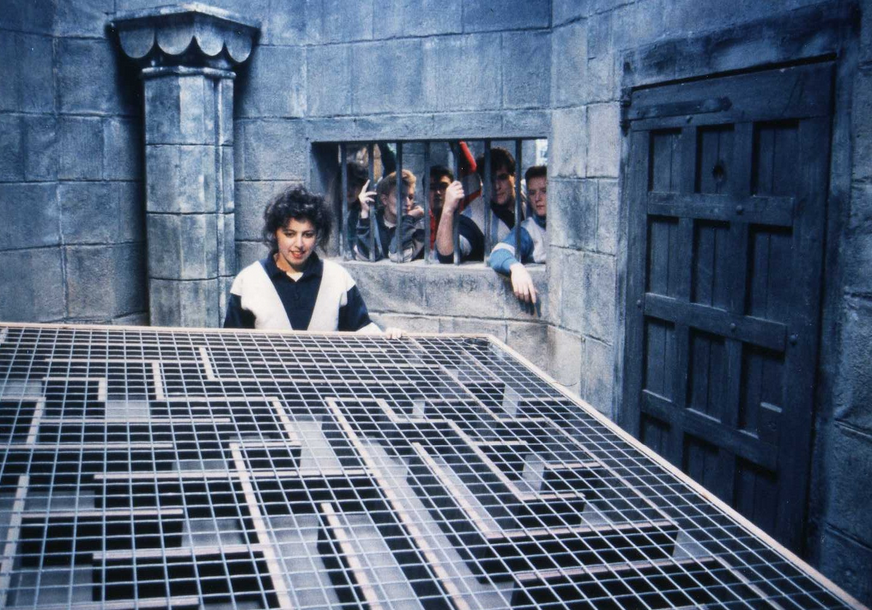
RO’B: We had one girl who was a team captain. Inside the room there was a wire fence with a hole in it – on the other side of the hole was a turntable, on the far side of the table was a crystal. On the floor there was a crank handle in three pieces and all she had to do was put the crank handle together, put it into the slot, pop it into the gear, turn the handle, and the table would turn around and until the crystal was near the gap in the wire fence, put her hand through, take the crystal, and walk out. It wasn’t rocket science. She had two and a half minutes.
But she went in and picked up the crank handle and threw it over the fence. We all went, “Excuse me?” I could hear Malcolm’s voice saying, “Richard, we’re going to have to do this again”. And we did do it again and that was the only one that we ever filmed again.
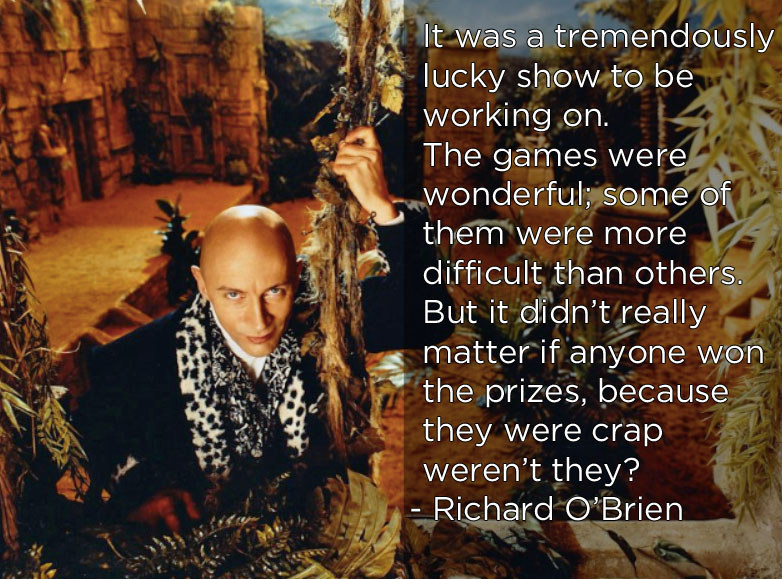
DGC: My favourite game was probably a game called Ratrun, which was a multilayered maze which required the contestant to climb up inside and turn off certain clocks, get the crystal, and get out. It was dark, claustrophobic, and really quite scary. I loved it because it was so straightforward and yet so demanding. We did have one woman come of out that one and collapse and we had to cut. All contestants were given a medical and if they had any condition at all they had to tick a box – this woman hadn’t ticked the box for claustrophobia.
KD: My most embarrassing moment was having to rewire a huge plug that was inside a big plastic case with these rubber gloves on. You can watch me cock it up on YouTube. The gloves were really stretchy – I know how to wire a plug but my mates never let me forget it. It’s still occasionally shown on Challenge TV and I will get a text from someone going, “Wanker!”
DGC: Contestants were always advised when they enter a cell to tell their teammates what they could see. In one wonderful moment, a contestant ran into a cell and shouted, “I can see three pieces of polystyrene and a cameraman!”
Each team of six players would play 10 games: Each crystal they won bought them five seconds inside the Crystal Dome, or could be used to release players trapped in the game rooms.
RO’B: It was a tremendously lucky show to be working on. The games were wonderful; some of them were more difficult than others. But it didn’t really matter if anyone won the prizes, because they were crap weren’t they?
DCG: In the early days of developing the format, Malcolm and I would say, “So what do we give as a prize?” And he would say, “What about a washing machine and a fridge?” and I said, “We can’t give a washing machine and a fridge on The Crystal Maze!” We realised the prizes needed to be different, and because the show was so physically demanding – it would be things like jumping out of an aeroplane, driving a Porsche, that sort of thing.
But the truth is, we had a budget. All shows have a prize budget and sometimes you have to cut corners, to be completely honest. Sometimes the prizes were a bit naff but they were all coming from the same place – they were activity prizes because you’ve just done an activity show.
KD: Richard O’Brien was like that all the time – that’s not an act, that’s him. He turned up in a blue convertible Rolls-Royce dressed like you see him on the show, and he was singing songs and doing voices all the time, whether we were sitting around between shots or anything else. He was a genuinely lovely guy – mad as a box of frogs.
DGC: The budget was about £125,000 per episode. It used to take two days to shoot each episode and we’d do three in a week, so five weeks to shoot a series. Day one was with Richard where they would play all of the games, do the Crystal Dome and find out the outcome, and then on the second day I would have the contestants and one camera – if I needed any extra shots because I couldn’t get them at the time, usually gameplay shots, I would go back and get them.
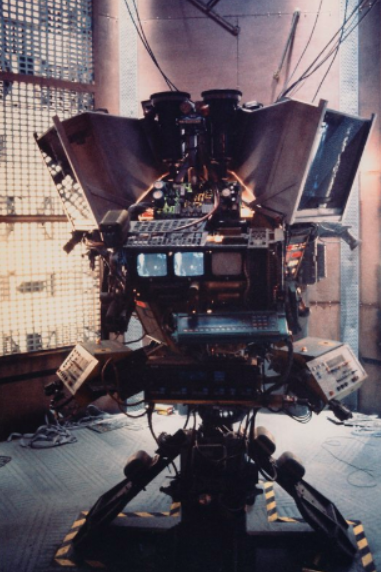

KD: What was weird was you did all the games on day one and then on day two you go back in to shoot all the closeups. Whenever they said, “Cut!” you had to hold the pose and someone would come and take a polaroid of you and then you could move, then when they came to do the close-ups [the next day] the continuity lady would put you all in the same positions. I had to cock up the same game again but with a camera in my face, which was horrible because I felt bad about getting it wrong the first time.
JD: We were looking at films as inspiration, which wasn’t an approach people were taking with game shows at the time. A Blade Runner influence was going on at the time … And elsewhere it was trying to re-create an exotic place you’d go to, so the Aztec one had a South American theme. And it was meant to be a space station, not just a place in the world but actually outer world. There was a backcloth that had the Earth and the Moon on it so you felt you were floating in space.
We introduced a moat around the dome, with a bridge powered by hydraulics, which Richard calls up so they can enter the dome. We had a lot of stuff that if I was doing it now I’d probably think, No, that’s not a good idea, but at the time I thought, Yeah, yeah, we should have a moat with a hydraulic bridge.
Water is always a difficult thing on set because it’s so heavy. Once you have any sort of depth you’re talking about tons and tons of pressure. So on three or four areas like the Aztec river, where they all started off each episode by canoeing up the river, there were some very involved structures to keep it in place to make sure it didn’t burst.


One of the show's key innovations was O'Brien's asides to camera – but like so much else on the show, they came about by accident.
RO’B: On the first series we had five cameras, two outside the cells and three looking at the game. And the producers weren’t watching the ones outside because they were too busy seeing how the game was playing out. One of the camera operators outside said, “What are we supposed to do, Richard, are we supposed to shoot the backs of their heads?” And I said, “No, no, come over here.”
I just started talking into the camera, about anything. I was just trying to make the cameraman laugh and as soon as I saw the camera shaking on his shoulders I’d look back at the clock and say, “OK, half a minute to go.”
They didn’t know they had any of these asides until they came to edit the series together, and once they did, they realised how that worked – a quick cutaway of me saying, “They’ll never manage this”, or I’d pull out the harmonica, and unknowingly it added a complicity between me and the audience at home because I was looking straight into the camera. I never did it when the contestants were there, only when their backs were turned.
DCG: Richard’s masterstroke, and I can’t give him enough praise for this, was, you know during the programme when he talks to the camera? That was his idea. When a contestant went into the game, all I was looking at was the game cameras. I didn’t realise until the end of the first episode that Richard had been talking to one of the other cameras. We didn’t know! He did that himself. When we realised what this could bring to the show we asked him to do it all the time, and he did.
The only other character in the show was Mumsy, who lived in the medieval zone.
Sandra Caron: Originally there were going to be four people in each of the four zones; one of them was a fortune teller. But it ended up just being me. We just improvised, there was no script. I’d never been on a show like that; it was fantastic. It was so different to anything else I’d done.
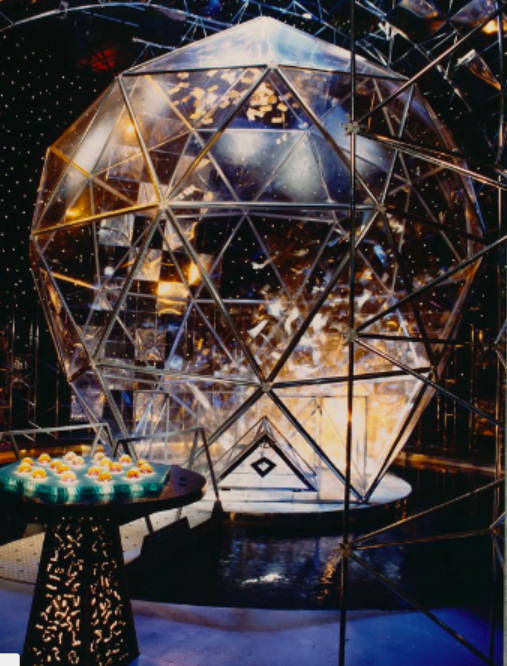
RO’B: Mumsy was just brought along for three games in the first series and that was going to be it. I referred to her as Mumsy and once I’d done that I’d established her as Mumsy and she stayed with us forever.
I just said once, “Here you go Mumsy, I’ll cross your palm with silver. She’s had a hard night last night.” And then we had this character who liked a spot [of drink]. It built up a kind of narrative in a way that was unusual for game shows. Children used to believe she really was my mum and I lived there. Some would come up with wonderful ideas for how we lived and where we brewed the crystals.
SC: At the beginning, Mumsy had a drink problem and I’d have a glass of water on the table with me and one day someone put vodka in there instead of water. So that was a little startling.
And then there was the famous ending, with the teams madly scrabbling for tokens...
DGC: [The only problem with the format] was that when the team went in the Crystal Dome at the end to collect gold tokens, it was too easy. We were all standing around at the end of a 10-and-a-half-hour day thinking, What the hell are we going to do?
We were tired and racking our brains and the assistant floor manager said, “Well, why don’t you put in a silver token, and for every silver token, you subtract from the overall total.” We all turned round and said, “That’s genius.” And that’s what we did.
RO’B: It’s just impossible to tell the difference between gold and silver in the dome while they’re all fluttering in the air. Impossible. Just sheer luck. Truthfully, you grabbed as many as you could and pushed them through. If you tried to get clever, you’d end up with very little.
KD: In the dome you couldn’t see what was gold and what was silver because of the lighting, it was impossible. Plus we realised that if we all lay down we’d stop the airflow and it would be easy. But they said, “Could we shoot that again and can you jump about a bit more?”
RO’B: We would film the original [dome sequence] from outside with the team in the dome, then the bell rang and they had to stop. That would be legitimate. But we would put a camera inside [afterward] and start the thing again and get them jumping around again with a camera facing up, so you had the swirling effect. In fact, we did it the next morning – the team that played the day before would go and do a close-up of a hand getting the crystals and little shots like that. It was just for added impact. We were making television, it wasn’t cheating.
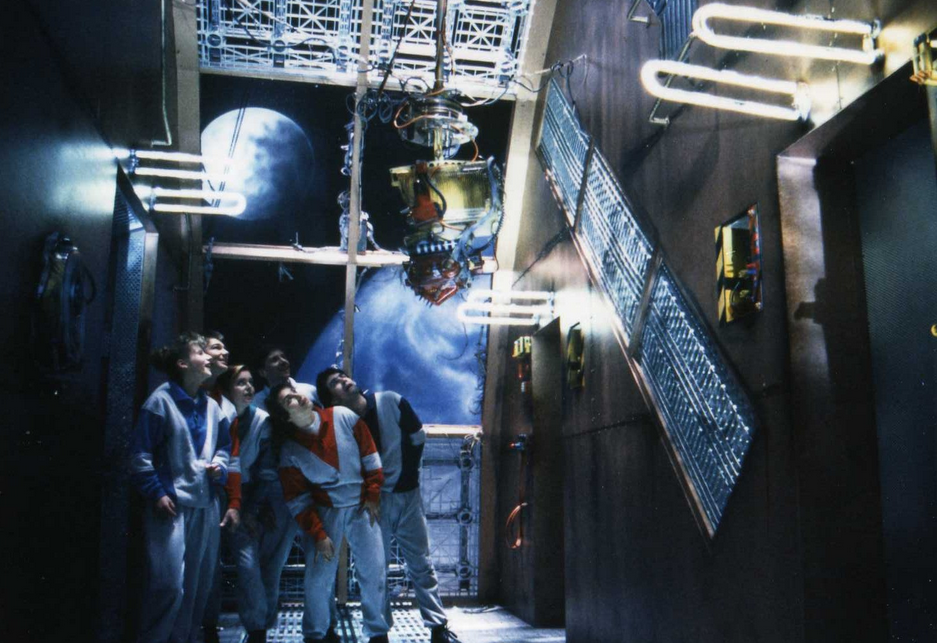
The show was an instant hit when it first came appeared.
DGC: Channel 4 told us they were going to repeat the show at 6pm for kids [the original timeslot was 8:30pm] and we were quite surprised – we didn’t realise that kids were going to watch it and like it. The important thing is that we were making this show for adults, so the kids were a bonus audience.
Channel 4 suggested we do a kids' version, so we did. But we were very clear that we would make it just as hard – we weren’t going to tone it down. If we did that, the kids would see what we’d done and they wouldn’t be very happy. We didn’t make any concessions. The kids had to do a real show.
RO’B: Someone said we should do a Christmas special and we went through a big list of people we’d like to get on it, and we kind of realised that you might want George Clooney but you’re not going to get him, you’d end up with a real B-list, C-list kind of crew. Then someone came up with the idea of doing a children’s special which was a wonderful idea. It was a much more generous idea than just showbiz people turning up again and being on television. It was delightful.
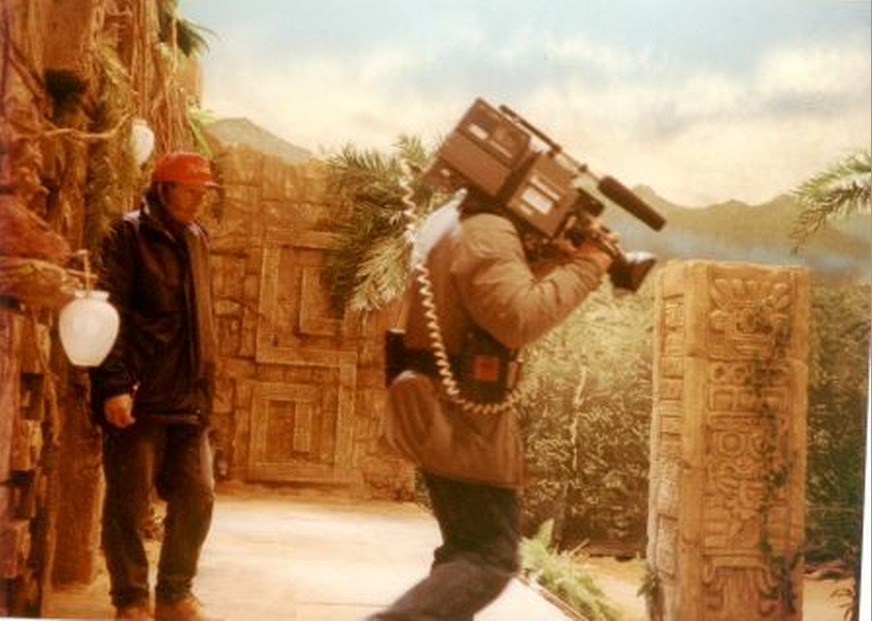
DGC: I remember Channel 4 coming to me and saying, “David, would you like to make a celebrity version of Crystal Maze?” And I said, “Not on your life!” What a terrible idea. We worked very hard to keep an air of mystery around the series and to have integrity and back in 1990 to 1995 you just wouldn’t have done that. Now there would be a celebrity version – but there would also be a massive web presence which we didn’t have.
We didn’t even have merchandise. Can you imagine what it would be like now? Hasbro created a game and there were pub slot machines, and some installations, like one at a bowling alley in Southampton, but really there wasn’t the opportunity for it back then. Also, the complete series has never been released on DVD, and I don’t understand why.
RO’B: I wanted to leave at the end of Series 3, because I was an actor and I didn’t want to become a game show host. And I didn’t want it to drop in viewer figures because, you know, it was old hat, “seen that”. Channel 4 said they were moving it from the evening to 2 or 3 o’clock in the afternoon. I didn’t want to go down that road and find my worth becoming diminished – I didn’t want to not be able to do acting.
I pleaded to leave after three and they said, "Just do one more," and I said "OK." I did four movies shortly after that and I don’t think I would have been allowed to have done them if I’d stayed as a game show host, so it was the right decision for me anyway.
I understood that my life would change after being on television and it did. People would grab me if I was in an airport or something – I mean physically grab me – and say, “Oh! It’s you!”
DGC: I have a framed copy of Broadcast magazine from May 18, 1990, and it’s the week ending May 6, 1990, and guess what’s number one? Crystal Maze, 3.81 million. We were Channel 4’s top-rated entertainment show for six years. It was huge. Personally I think they ended it too soon; but it was their decision.
SC: I live in LA now and I got talking to a young guy in a shop. He said he was going to be an actor. He was from Shropshire and I said I was in The Crystal Maze and he freaked out. They still do. It’s still in people’s minds, if they were 10 or 11 at the time. That’s the power of TV – and I was only on for two or three minutes at a time.
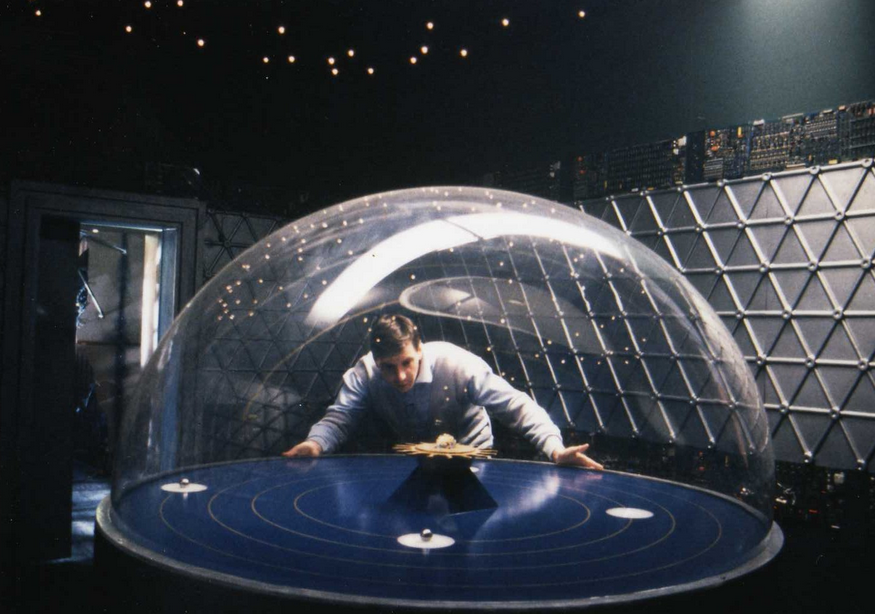
DGC: It’s a shame they can’t bring it back. The rights issue is slightly cloudy, but the rights are held by Zodiac. Because Crystal Maze was a morphed version of Fort Boyard, the French own the format. If anyone was going to make it again, it would be Zodiac.
I’ve been approached about 15 times over the years to do it, but what puts everybody off I think is the initial startup cost. If you were to build that set, it’s probably £750,000 to £1 million and that’s a lot before you’ve shot a frame.
You can work for a long time and not work on a show that lodges in the public consciousness like this one has. I’ve done a couple of other things like Top of the Pops and Shooting Stars, and it’s really nice to have worked on shows that people remember.

